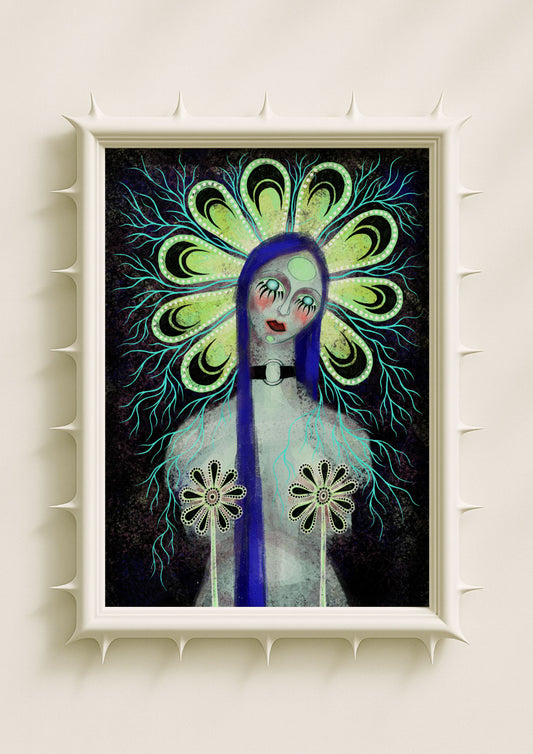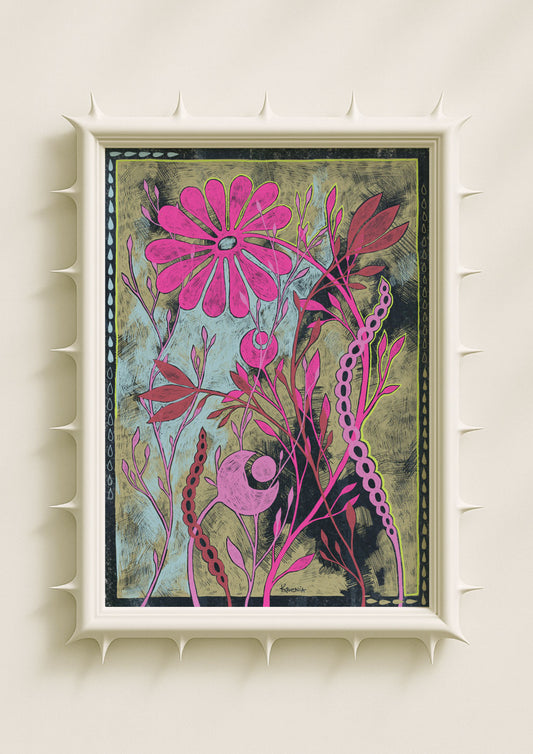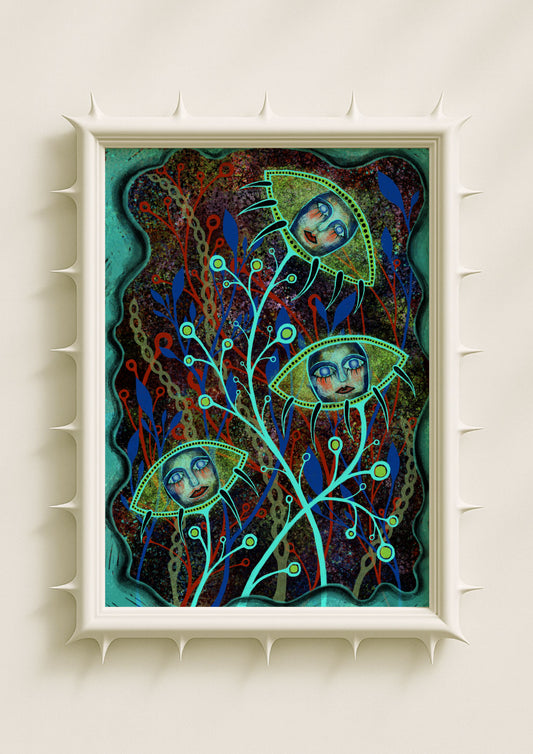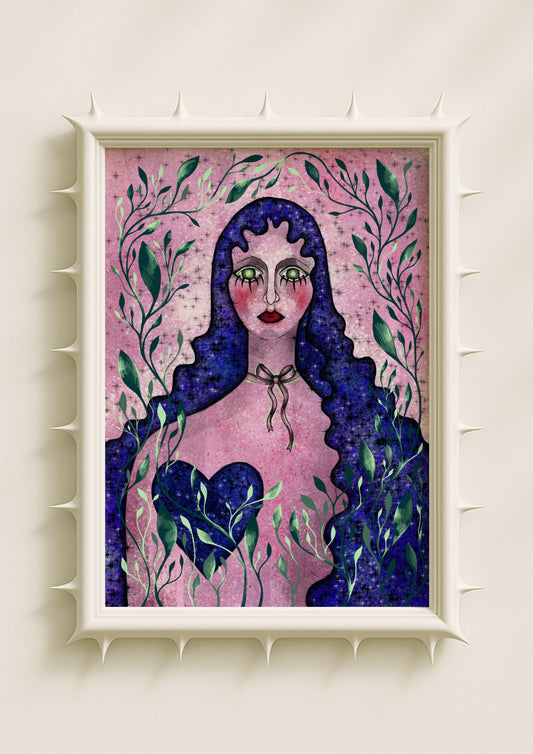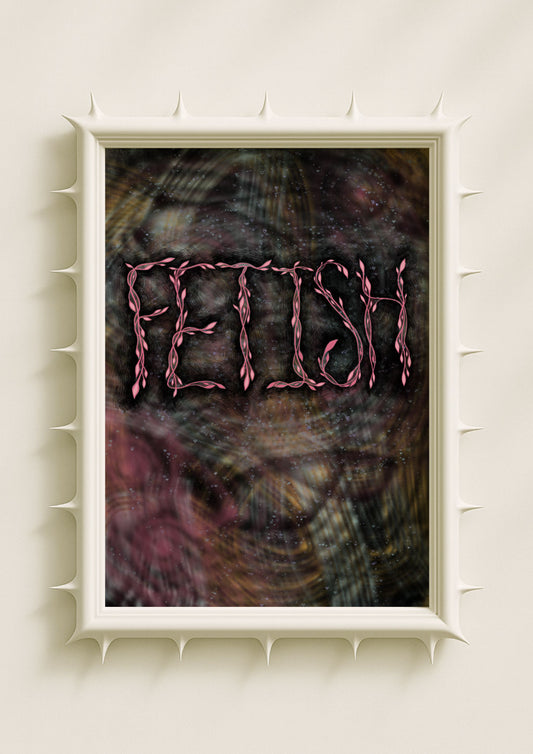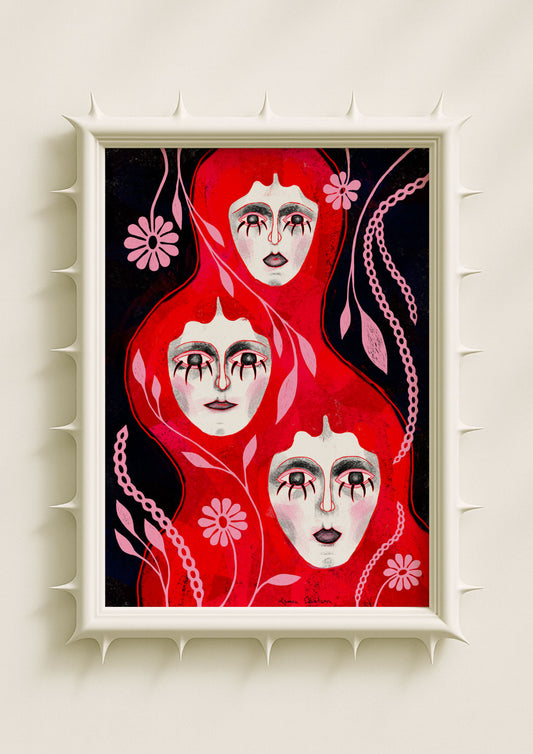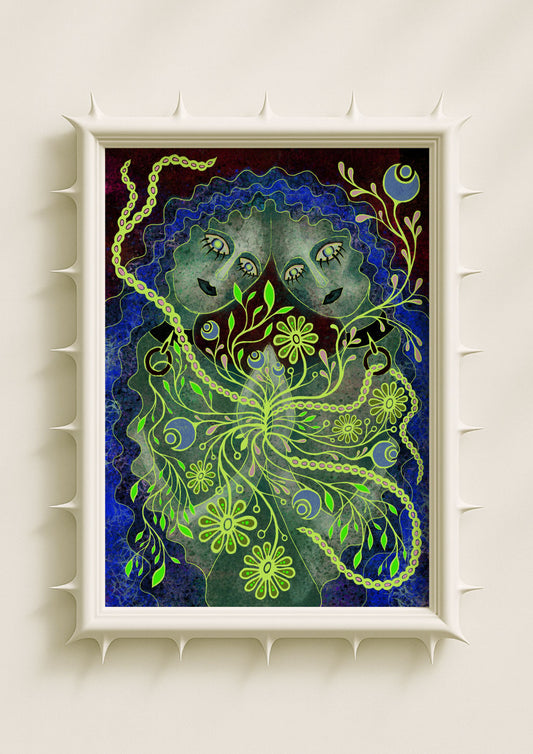When One Face Isn’t Enough to Hold an Emotion
In many of my artworks, a single face cannot contain the full emotional state of the figure. Feelings rarely arrive in a clean, singular form. They overlap, contradict, and echo inside the mind. By painting doubled or tripled faces, I allow these inner layers to become visible. The repetition is not decorative — it’s psychological. It expresses the moment when identity feels split, when thought and instinct collide, or when two versions of the self coexist in the same breath.
Mirrored Profiles as Internal Dialogue
Mirrored faces often resemble a conversation held entirely within the mind. Two profiles facing opposite directions evoke a dialogue: past and present, desire and restraint, longing and fear. The duplication becomes a visual metaphor for introspection. The figure appears to listen to themselves, argue with themselves, or reach toward clarity through internal tension. These mirrored forms feel like emotional self-portraits — a private discussion made visible.

Tripled Faces as Emotional Echoes
When I paint three faces layered or aligned, the mood becomes even more complex. Each face holds a slightly altered expression or subtly different posture. They behave like emotional echoes: one version leads, another hesitates, another lingers behind. This structure captures the way thoughts ripple through consciousness. The viewer sees the movement of emotion, not just its static result. Multiplicity becomes a way to portray time — a moment unfolding in three parallel feelings.

The Duality Between the Seen and the Hidden
A doubled face often highlights the tension between what is shown outwardly and what remains unspoken. One face may be calm while the other hints at uncertainty or vulnerability. The split suggests that identity is layered: a surface and a depth, an expression and a counter-expression. This duality mirrors real emotional experience, where the truth is rarely held fully on the surface. By revealing the hidden face beside the visible one, the artwork exposes emotional truth more directly than realism can.
Multiplicity Within Surreal Botanicals
In my botanical-surreal portraits, the doubled or tripled faces are often intertwined with petals, stems, or halo-like floral forms. The organic shapes mirror the multiplicity of the figure. The petal layers echo the emotional layers. The branching stems resemble the pathways of thought. The floral symmetry creates a structure that holds the dual or triple identity in balance. The result is a figure that appears simultaneously human, symbolic, and mythic — a person expanding into emotion.

A Visual Expression of Psychic Movement
Multiplicity introduces movement into stillness. Even when the faces are frozen, their repetition suggests inner motion — a shifting state of mind, a decision forming, a memory resurfacing. These faces behave like flickers of thought, quick shifts in feeling, or the ghost of a former self lingering in the present. The artwork becomes a way of recording the invisible motion of the psyche.
Why Multiplicity Feels So Intimate
There is a vulnerability in showing more than one version of oneself. A doubled face reveals contradiction; a tripled face reveals complexity. Instead of a polished, unified identity, the artwork presents something raw and honest: the layered interior of a person who is thinking, sensing, and changing.
Multiplicity turns the portrait into a living emotional map. It lets the viewer witness the shifting inner world that lies beneath a single expression — a world where the self is never fixed, always transforming, always in quiet conversation with itself.
